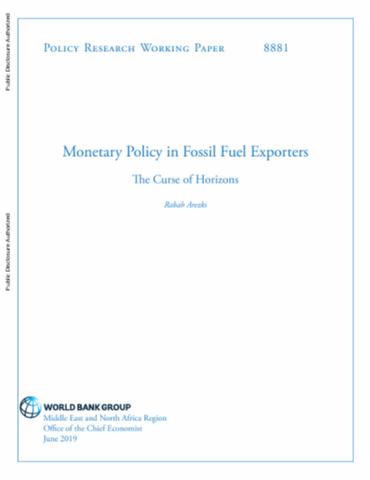Contents
A general rule is that as the rate moves higher, the investment becomes less valuable. Fed’s third tier is the seasonal credit program, which extends to smaller financial institutions with higher volatility in the cash flows. For instance, financial institutions serving agriculture or tourism sectors see fluctuations in their cash flows due to their seasonal patterns. However, their cash flows are predictable depending on the weather conditions. But, institutions in this tier are riskiest and thus, face higher interest rates. The interest rate that the central bank charges on such loans is called discount rates.
They know they will not be around for much longer so they tend to consume more now without much regard for the future. We do not want governments or businesses behaving in this way though –although many firms do behave in a similar fashion while trying to reward stock holders. A discount rate of 0% means that someone is indifferent between having a benefit or cost now vs. any time in the future. A discount rate of 0% implies that future generations are treated exactly the same as current generations.
All in all, NPV is the indicator of how much value a project or investment adds to the company. To explain better, NPV is the difference between the present value of the cash inflows in the company and present cash outflows in the company over a period of time. The discount rate in NPV along with the time period concerned will affect the calculations of the NPV for your company. Basically, NPV is used to measure the costs, benefits, and main profitability of an investment over time. Nonetheless, getting the discount rate as a business can be very complicated. The discount rate is the main metric when positioning for the future for investors and companies.

Companies will have different discount rates since they will have different expectations for what return their investments should make for the company. In general, newer companies that are growing will have a higher internal rate of return and therefore use a higher discount rate when discounting future cash flows. Discount Rate – The discount rate, on the other hand, is the interest rate that is utilized to determine the present value of future cash flows in a DCF analysis. Using it to calculate the Net Present Value – The discount rate is used in the calculation of the future cash flows of a business using the net present value of the company. It expresses the change in the value of the investment money in the company over time. In short, it is vital to get the NPV value if you are going to use the discounted cash flow method to get the value of the method and the discount rate helps in getting this value.
Types of Discounts
For instance, an investor might have $10,000 to invest and must receive at least a 7 percentreturnover the next 5 years in order to meet his goal. It’s the amount that the investor requires in order to make the investment. The first one is a USD 1,000 bond that will mature in one year and pay Why Training a Neural Network Is Hard USD 1,100. The second one is a USD 1,000 bond that will mature in two years and pay USD 1,200. To decide which one is more profitable, you need to calculate the present value of each bond. The cost of capital is the cost of the debt incurred in order to finance a purchase or ease cash flow.
The discount rate in discounted cash flow analysis takes into account the time value of money. It also takes into account the risk or uncertainty of future cash flows plus the effects of inflation. The discount rate is the expected rate of return for an investment. It is also known as the cost of capital, hurdle rate, or required rate of return, and it helps to estimate the present value of an investment or business based on its expected future cash flow. Calculating the bank discount rate helps investors determine the net gain they’ll earn on certain money market investments if they hold the investment until maturity. This net gain is expressed as a percentage of the investment’s initial cost.

Therefore, discounting helps to understand the real value of future money today. Now, let’s use the formula above to figure out the discount rate. All three types of the Federal Reserve’s discount window loans are collateralized. The bank needs to maintain a certain level of security or collateral against the loan. The Fed’s discount window program runs three tiers of loans, each of them using a separate but related rate.
Discounted cash flow is a valuation method used to estimate the attractiveness of an investment opportunity. In either case, the net present value of all cash flows should be positive if the investment or project is to get the green light. Federal Reserve loans are processed through 12 regional branches of the Fed. The loans are used by financial institutes to cover any cash shortfalls, head off any liquidity problems, or in the worst-case scenario, prevent the bank’s failure. This Fed-offered lending facility is known as the discount window.
Formula and Calculation of the Discount Rate
Companies in this range are higher risk with limited debt capacity. Get instant access to video lessons taught by experienced investment bankers. Learn financial statement modeling, DCF, M&A, LBO, Comps and Excel shortcuts.
- To calculate the discount, you must have the list price and the selling price of the product you are buying.
- For instance, the European Central Bank offers standing facilities that serve as marginal lending facilities.
- And for an investor to invest in a startup can be a huge risk, which is why they need to know the value of the cash flows in the future of the company.
One of the common methods to derive the discount rate is by using a weighted average cost of capital approach . This approach represents a weighted average of after-tax costs of debt in the company along with the cost of equity. The weighting here is based on the target debt-equity ratio of the company, which is measured at the market rate.
Britannica celebrates the centennial of the Nineteenth Amendment, highlighting suffragists and history-making politicians. We hope that the above article is helpful for your understanding and exam preparations. Stay tuned to the Testbook App for more updates on related topics from mathematics, and various such subjects. Also, reach out to the test series available to examine your knowledge regarding several exams.
Step 3. Capital Structure Analysis (Debt Equity Weights)
The capital asset pricing model is the standard method used to calculate the cost of equity. In order to tax affect the pre-tax cost of debt, the rate must be multiplied by one minus the tax rate. This company might want to branch out into a new market or diversify its product line. Such a project would carry a higher risk than standard operations, but could also bring substantial rewards and help it to smash the ceiling on its stagnating growth. In the US, the discount rate has a double meaning, one of which is the interest rate charged by the Federal Reserve for overnight loans. Please remember that the discount rate estimation is a science on its own.
For instance, suppose your investment portfolio has grown from $10,000 to $16,000 across a four-year holding period. It was found that at 13.237% per annum, the total present value becomes equal to the invested amount. If the money would not come in for two years, then the denominator would be squared and $1,000 in two years would only be worth $826.45 now. A new car cost about $1,400, laborers were paid $5.50 to work a full 8-hour day, a newspaper was 2 cents, and a movie ticket was 17 cents! The bank then collects the bill of exchange’s or draft’s full value when payment comes due.
The shares will yield future cash flows as dividends for 5 years, and capital appreciation in the fifth year. People give extra emphasis on the estimation of future cash flows and the calculation of present values. The discount rate rises according to the level of uncertainty of future cash flow. It is an equation that tells us how much a series of future cash flows is worth. Specifically, how much it is worth as a single lump sum value now. The discount rate is the main key to managing the relationship between a company and an investor.

As we have seen, the discount rate is nothing but one’s minimum expected rate of return. Before committing to an investment, https://1investing.in/ an investor has two choices. He/she can either invest in a risk-free option or will invest elsewhere.
Discount Rate vs. Net Present Value (NPV)
When discount rates are low, Rita can loan money to customers for a lower rate. However, if the bank has to pay 10% on the money they are borrowing, they will then have to charge customers a much higher rate on their loans. Most people will not agree to borrow money if the interest rates are too high. These two factors – the uncertainty risk and money’s time value – together form the theoretical basis for the discount rate. The greater the uncertainty the higher the discount rate, and the lower the current value of our future cash flow.
The rate will determine how much money is available for more loans as a way to influence the amount of money in our economy and will impact the inflation rate. To be specific, the discount rate is a term that is used to find the business value and is usually confused with the capitalization rate. But they are different since the capitalization rate is used with the single discretionary cash flow, but the discount rate is used with a series of cash flows of a forecast. So, the discount rate of the company is linked to the amount of risk in the operation and the ability to access the capital of the company. Other types of discount rates include the central bank’s discount window rate and rates derived from probability-based risk adjustments.
There are two main uses of the term discount rate that we will explore in this lesson. The first is when banks need to borrow money from the Federal Reserve and the other is when businesses want to figure out the value of future income. When people or businesses expect to receive money in the future, there is a way to figure out how much that money is worth today. The percentage rate used to compute the value of future income is called the discount rate. Depending on the context, the discount rate also called the discounted rate of return is the expected rate of return for an investment.
This is the cost of those goods that are available for sale and those available for sale even at the end of the sales period. It can also be altered to get the results of the perpetual inventory, which is the average before the sale of the units. The discount is provided for; boosting the sales of a particular product, clearing out old stock, encouraging the distribution, rewarding likely customers and such related reasons. Well aware of discount rate meaning, let us now learn the simple discount rate formula.
In case the future cash flow of your company is a lot higher than the present value and your discount rate can show this, then this would attract investors even more to invest in your company. So, both the DCF and the NPV methods are used to get the value of the company by accessing the quality of an investment opportunity. And both these methods use the discount rate as their main element. The analyst usually uses WACC to calculate the enterprise value of a firm.
